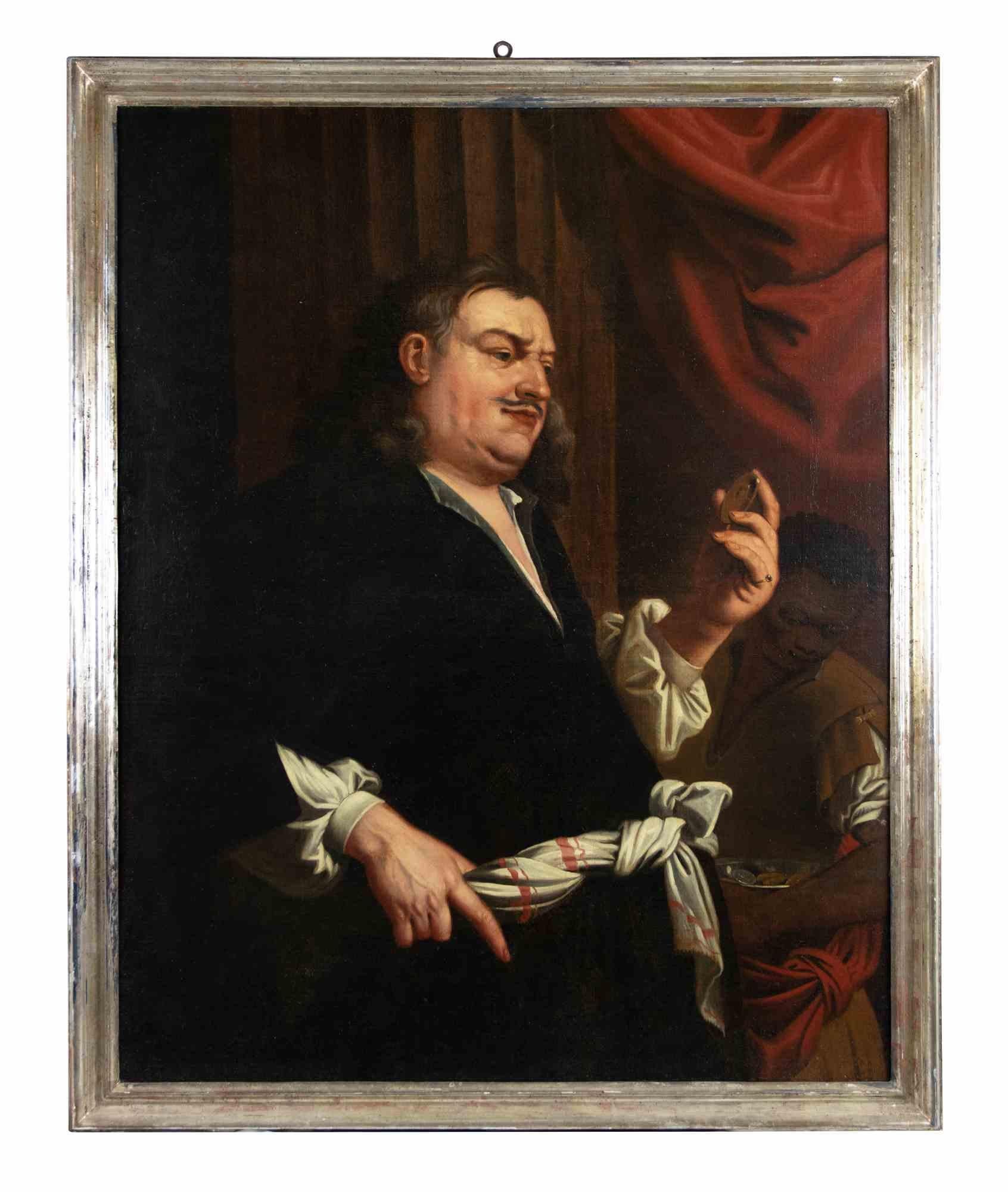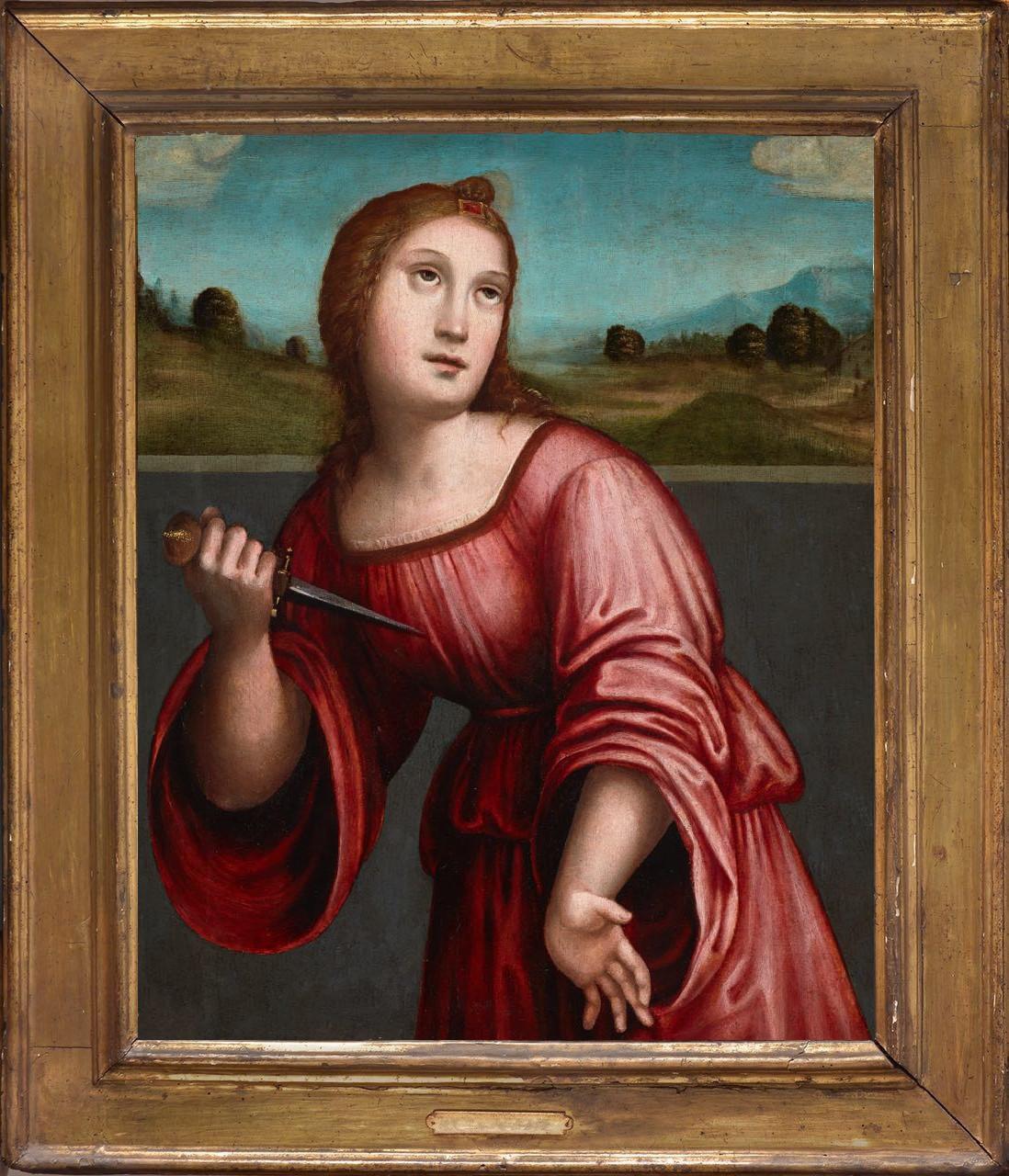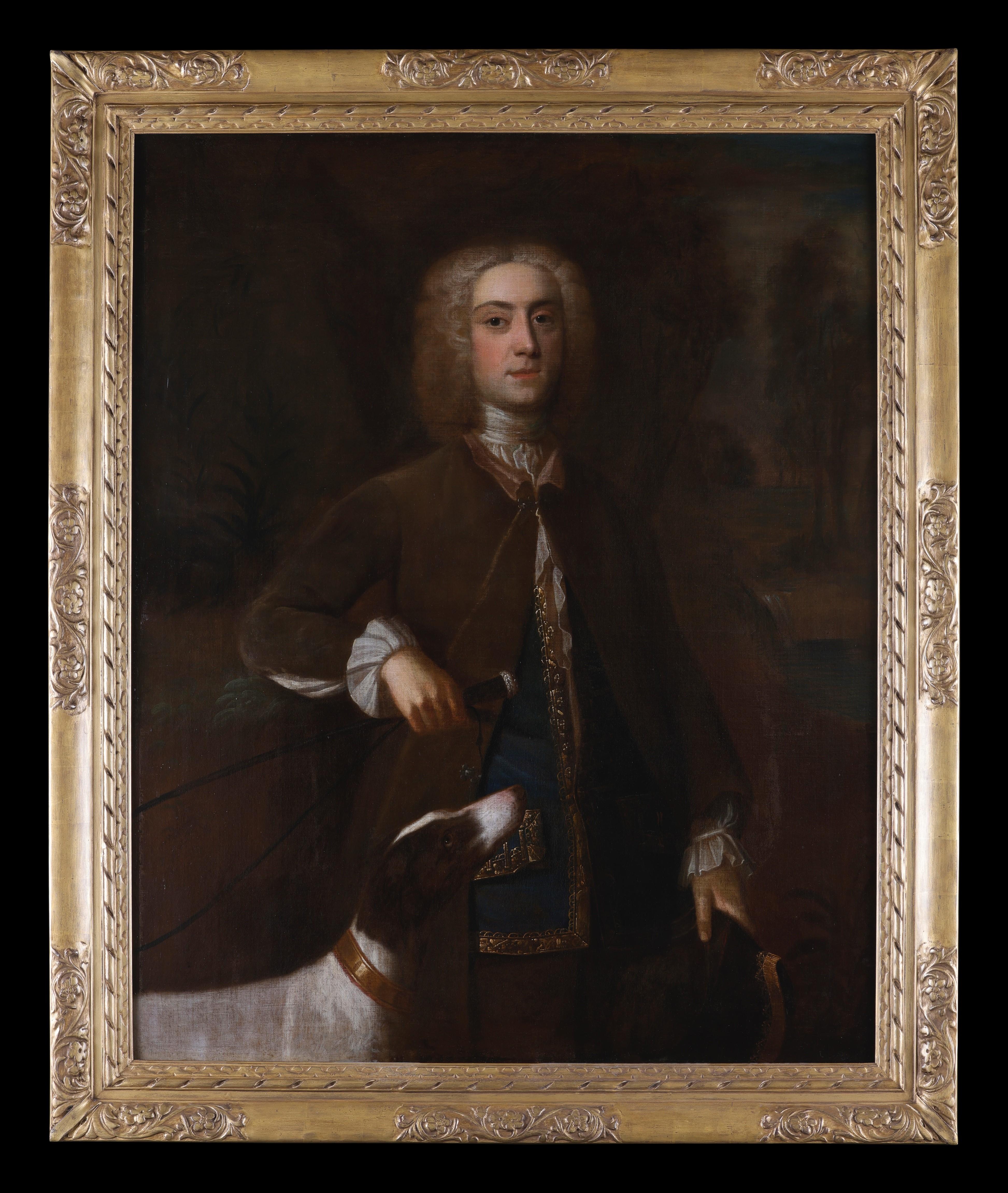Items Similar to Fine 18th Century English Oil Portrait Smart Gentleman Squire holding Letter
Want more images or videos?
Request additional images or videos from the seller
1 of 7
Fine 18th Century English Oil Portrait Smart Gentleman Squire holding Letter1780’s
1780’s
About the Item
English School, circa 1780’s
Circle of George Romney (1734-1802)
oil painting on canvas, framed
framed: 36 x 30 inches
canvas: 30 x 25 inches
private collection, England
the painting is in overall very good and sound condition
- Creation Year:1780’s
- Dimensions:Height: 36 in (91.44 cm)Width: 30 in (76.2 cm)Depth: 1 in (2.54 cm)
- Medium:
- Movement & Style:
- Circle Of:George Romney (1734 - 1802, English)
- Period:
- Condition:
- Gallery Location:Cirencester, GB
- Reference Number:1stDibs: LU509312007462

About the Seller
5.0
Platinum Seller
These expertly vetted sellers are 1stDibs' most experienced sellers and are rated highest by our customers.
Established in 1989
1stDibs seller since 2016
3,570 sales on 1stDibs
Typical response time: 2 hours
- ShippingRetrieving quote...Ships From: Cirencester, United Kingdom
- Return PolicyA return for this item may be initiated within 3 days of delivery.
More From This SellerView All
- Antique Spanish Old Master Oil on Wood Panel, Head Portrait of ChristLocated in Cirencester, GloucestershireArtist/ School: 18/19th Century Spanish School Title :Head study of Christ Medium: oil painting on wood panel, period gilt framed panel : 6 x 5 inches Provenance: private collect...Category
18th Century Old Masters Figurative Paintings
MaterialsOil
- Manner of Guido Reni (1575-1642) The Prophecy of Simeon Large Antique PaintingLocated in Cirencester, GloucestershireArtist/ School: Manner of Guido Reni (1575-1642) Italian Title: The Prophecy of Simeon Medium: oil painting on canvas, unframed Painting: 21.5 ...Category
Mid-18th Century Old Masters Portrait Paintings
MaterialsOil
- Elegant Georgian Young Ladies Woodland Park Antique English Oil PaintingLocated in Cirencester, Gloucestershire'Morning Amusement' English School, circa 1800's after the painting by Sir Joshua Reynolds, British 1723-1792 oil painting on canvas, unframed please...Category
Early 19th Century Old Masters Figurative Paintings
MaterialsOil
- 17th Century Dutch Old Master Oil on Panel, Ladies Gathering FlowersLocated in Cirencester, GloucestershireArtist/ School: 17th Century Dutch School Title: Ladies Collecting Flowers Medium: oil painting on panel, framed Oval : 6.75 x 9.25 inches, frame...Category
17th Century Old Masters Figurative Paintings
MaterialsOil
- 18th/19th Century French Old Master Oil Christ entering JerusalemLocated in Cirencester, Gloucestershire18th/19th Century School 'A scene of Christ entering Jerusalem' Medium: oil on canvas, framed Size of painting: 21.5" x 18.25" inches condition: overa...Category
18th Century Old Masters Portrait Paintings
MaterialsOil
- Antique Continental Old Master oil after Murillo, fine gilt frameLocated in Cirencester, GloucestershireArtist/ School: 18th/ 19th century Continental School, after Murillo Title: Figures eating Grapes Medium: signed oil painting on metal, framed. Size:...Category
19th Century Old Masters Figurative Paintings
MaterialsOil
You May Also Like
- A Rich Merchant - Painting by Unknown - 18th CenturyLocated in Roma, ITA rich merchant is an original old master artwork realized in the 18th Century. Mixed colored oil painting on canvas depicting a merchant looking at a coin in his left hand. Provena...Category
18th Century Old Masters Figurative Paintings
MaterialsOil
- Lucretia, by Giacomo Raibolini Francia. Detto il Francia. Oil on panel, framedLocated in Brooklyn, NYGiacomo used to paint with his brother Giulio, identifying their works with the monogram «I I». The strong influence of his father, Francesco, is undeniable in all his works, althoug...Category
16th Century Old Masters Figurative Paintings
MaterialsOil, Wood Panel
- Portrait of Jean-Baptiste Greuze, painted on linen by his daughter Anna GreuzeLocated in PARIS, FRThis replica of the last self-portrait of Jean-Baptiste Greuze painted in 1804, executed by his daughter Anna at her father's side and recently rediscovered, provides us with a poignant image of the great artist, represented with panache despite the disillusions of life. 1. Jean-Baptiste Greuze Jean-Baptiste Greuze was the sixth child of a roofer from Tournus and retained a certain rusticity in his behaviour from his provincial childhood, beyond his taste for describing picturesque scenes of the countryside. He initially started training with a little-known painter from Lyon, Charles Grandon, before his genius was recognised in Paris where he became a full-time student of the Académie (of Painting) in 1755. He exhibited his work for the first time at the Salon during the summer of 1755, before leaving on a trip to Italy in the company of Louis Gougenot, abbot of Chezal-Benoît. Upon his return to Paris, Greuze became a prolific painter, participating widely in the Salons held between 1759 and 1765, to which he sent no less than 63 paintings: numerous genre scenes (The Marriage Contract, The Beloved Mother), but also portraits of his family circle, of courtiers and art lovers, or of his colleagues. The Academy closed the doors of the Salons to him in 1767 for not having produced his reception piece within six months of his reception, as was the tradition. He worked actively on this painting (Emperor Severus rebukes Caracalla, his son, for trying to assassinate him ) until the summer of 1769, tackling historical and mythological subjects for the first time. Once this was completed, he was then fully admitted to the Academy, but as a genre painter, and not as an historical painter, which had been one of the greatest humiliations of his life. Greuze then refused any participation in events organised by the Academy or its successor, the Academy of Fine Arts until 1800. Abandoning history painting, he gave a new twist to genre scenes, bringing them closer to history painting, as in this pair of canvases which constitutes some of his masterpieces: The Paternal Curse: The Ungrateful Son and The Paternal Curse: The Punished Son . Married in 1759 to Anne-Gabrielle Babuti, the daughter of a Parisian bookseller, his marriage was unhappy and his wife probably frequently unfaithful. The institution of divorce enabled him to record their separation in 1793, keeping his two daughters Anna-Geneviève, born in April 1762, and Louise-Gabrielle, born in May 1764, with him. Little is known about his daughter Anna except that she was herself a painter and lived with her father until his death. It is likely that most of the paintings she produced up to that date were attributed to her father, whose technique she shared to a great extent, making it extremely difficult to establish an autonomous corpus of her paintings. Greuze died in his studio at the Louvre on March 21st 1805. The attention paid to the expressivity of his characters and the emotional charge they convey enabled Jean-Baptiste Greuze to enjoy immense popularity with the eighteenth-century public, and they still constitute Greuze's true modernity. As the artist said, "I dipped my brush in my heart". Greuze was also an exceptional draughtsman and a portraitist of immense talent and exceptional longevity who painted both the Dauphin (the son of Louis XV and father to Louis XVI) and the young Napoleon Bonaparte. 2. Greuze's self-portraits Greuze was very much influenced by Dutch paintings during all his life. While the source of his inspiration for genre scenes can be found in Gerard Dou...Category
Early 1800s Old Masters Portrait Paintings
MaterialsLinen, Oil
- Portrait of a Gentleman with his Dog - Possibly Abraham Tucker. Oil on CanvasBy Enoch SeemanLocated in St. Albans, GBEnoch Seeman - 1894 - 1744 An excellent example of Seeman's work. It is typically unsigned as was the case of many portraits of that time. A three quarter length portrait showing a r...Category
1730s Old Masters Portrait Paintings
MaterialsOil
- 17th Century by Juan Alfonso Abril Head of St Paul Painting Oil on CanvasLocated in Milano, LombardiaJuan Alfonso Abril (active in the 17th century in Valladolid) Head of Saint Paul Oil on canvas, cm. 48,5 x 62 - with frame cm. 63 x 76,5 Shaped wooden f...Category
Early 17th Century Old Masters Figurative Paintings
MaterialsCanvas, Oil
- Madonna and Child with St Catherine and Putti - Italian 17thC art oil paintingBy Giuseppe Bartolomeo ChiariLocated in London, GBThis stunning Italian 17th century Old Master religious oil painting is by Baroque artist Giuseppe Bartolomeo Chari. Painted circa 1684 it is a large and vibrant oil painting of the Madonna and child. To their left is Saint Catherine and to their right four putti or cherubs look upon a sleeping Jesus. The detail in all the figures faces and hair and the colouring is just superb, especially the Madonna's sumptuous blue robe. A really fabulous 17th century religious work with previous full attribution and excellent provenance which was once attributed to Carlo Maratta (1625-1713). Provenance. With Vangelisti, Lucca, Italy, 1966, from whom acquired by the family of the previous owner, and thence by descent. Red seal stamp verso Christies April 15th 1912 Christies March 23 1956 Condition. Oil on Canvas. Image size 44 x 54 inches unframed and in good condition. Frame. Housed in an original Carlo Maratta frame, 62 inches by 52 inches framed and in good condition. Giuseppe Bartolomeo Chiari (1654-1727), also known simply as Giuseppe Chiari, was an Italian painter of the late-Baroque period, active mostly in Rome. Born in Rome, he was one of the main assistants, along with Giuseppe Passeri and Andrea Procaccini, in the studio of an elder Carlo Maratta. His father had opposed the career, but his mother, on the recommendation of a painter named Carlo Antonio Gagliani. By the age of 22, he had frescoed the lateral lunettes (Birth of Virgin and Adoration of Magi...Category
17th Century Old Masters Portrait Paintings
MaterialsOil
Recently Viewed
View AllMore Ways To Browse
30 X 25
Painting The Letter
Framed Letter
English Old Master
25x30 Inch Frame
18th Century English Painting
Old English 18th Century
Antique 18th Century English Frames
Oil Painting Gentleman
Old English Oil Paintings
Fine English Antiques
18th Century England Painting
Smart Painting
English Gentleman
18th Century English Oil Paintings
18th England Oil Paintings
English Gentleman Painting
English Gentleman Portrait



